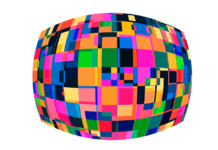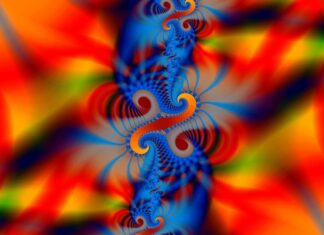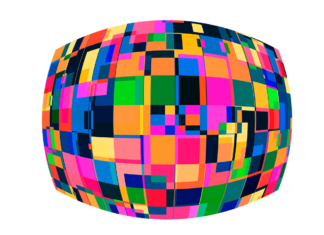Synthetic media, a term encompassing a variety of AI-generated content, has rapidly emerged as a transformative force in the fields of entertainment, communication, and beyond. This technological evolution involves the use of artificial intelligence (AI) to create content that often blurs the lines between reality and fiction. From deepfake videos to computer-generated art, synthetic media is reshaping the way we perceive and interact with digital content. Here, we explore the key facets of synthetic media and its implications for various industries.
1. Definition and Scope: Synthetic media refers to content that is generated, altered, or manipulated using artificial intelligence techniques. This can include deep learning, neural networks, and other AI algorithms to create various forms of media such as images, videos, audio, and text. The scope of synthetic media extends across entertainment, journalism, marketing, and beyond, raising questions about the authenticity and ethical implications of AI-generated content.
2. Deepfakes and Manipulated Videos: One of the most well-known applications of synthetic media is in the creation of deepfake videos. Deepfakes leverage AI algorithms to superimpose one person’s likeness onto another, creating convincing yet entirely fabricated video footage. This has significant implications for misinformation, identity theft, and the erosion of trust in visual media.
3. Advancements in Natural Language Processing (NLP): Synthetic media extends beyond visual content to include sophisticated text generation through Natural Language Processing (NLP). AI models can now generate coherent and contextually relevant text, leading to applications such as automated content creation, chatbots, and even the generation of entirely fictional narratives.
4. Creative Arts and AI-Generated Art: The intersection of AI and creativity has given rise to AI-generated art. Algorithms can analyze artistic styles, learn from them, and produce new works in similar veins. This has sparked debates about the role of AI in creative expression, challenging traditional notions of authorship and artistic creation.
5. Virtual Influencers and AI-Generated Personalities: The rise of virtual influencers and AI-generated personalities introduces synthetic media into the realm of social media and marketing. Virtual influencers, often entirely computer-generated, engage with audiences on platforms like Instagram, raising questions about the future of influencer marketing and the authenticity of online personas.
6. Impact on Journalism and Information Integrity: Synthetic media poses challenges to the field of journalism as it becomes increasingly difficult to discern between authentic and AI-generated content. Deepfake technology can be exploited to manipulate public opinion, spread misinformation, and undermine the credibility of news sources. This necessitates the development of robust verification tools and ethical guidelines.
7. Ethical Considerations and Deepfake Regulation: The rise of synthetic media has prompted a pressing need for ethical considerations and regulatory frameworks. Governments and tech companies are grappling with the challenge of balancing the creative potential of AI with the potential for misuse. Efforts to regulate deepfakes are underway, focusing on preventing malicious use and protecting individuals from the harmful consequences of synthetic media manipulation.
8. Democratization of Content Creation: Synthetic media has the potential to democratize content creation by providing accessible tools for generating high-quality media. AI-driven applications that facilitate video editing, graphic design, and content creation empower individuals who may not have traditional artistic skills. This trend could reshape the landscape of digital content creation and storytelling.
9. Evolution of Virtual and Augmented Reality: As synthetic media technologies advance, they contribute to the evolution of virtual and augmented reality experiences. AI-generated environments and characters enhance immersion and interactivity in virtual spaces, blurring the lines between the physical and digital worlds.
10. Future Implications and Technological Progress: The trajectory of synthetic media holds significant implications for the future. Continued technological progress in AI and machine learning is likely to bring forth even more sophisticated and convincing synthetic content. As this evolution unfolds, society will grapple with questions of privacy, authenticity, and the responsible use of AI-generated media.
Synthetic media, encompassing a spectrum of AI-generated content, has become a pivotal force reshaping our digital landscape. As we delve deeper into its multifaceted applications, one prominent aspect is the rise of deepfake videos, a phenomenon that raises concerns about misinformation and identity manipulation. These realistic yet entirely fabricated videos highlight the potential dark side of synthetic media, urging society to grapple with the ethical implications of AI-driven content manipulation.
Advancements in Natural Language Processing (NLP) stand as another noteworthy dimension of synthetic media. The ability of AI models to generate coherent and contextually relevant text has transformed content creation and communication. Automated content creation, chatbots, and the generation of fictional narratives are just a few examples of how NLP is reshaping the way we interact with written content.
The realm of creative arts has not been immune to the influence of synthetic media. The marriage of AI and creativity has birthed a new era of AI-generated art. Algorithms analyzing and replicating artistic styles challenge conventional notions of authorship and creativity. This fusion prompts us to reconsider the boundaries of human ingenuity and the role of machines in the creative process.
Virtual influencers and AI-generated personalities mark the convergence of synthetic media with the realm of social media and marketing. The emergence of entirely computer-generated individuals engaging with audiences on platforms like Instagram presents intriguing possibilities and, simultaneously, sparks debates about the authenticity of online personas and the future of influencer marketing.
As synthetic media infiltrates journalism, its impact on information integrity cannot be overstated. The difficulty in distinguishing between authentic and AI-generated content challenges the traditional standards of news credibility. The spread of misinformation through deepfakes necessitates the development of robust verification tools and ethical guidelines to safeguard the integrity of journalism.
The ethical considerations surrounding synthetic media, particularly deepfakes, have prompted calls for regulatory frameworks. Governments and tech companies are grappling with the responsibility of balancing the creative potential of AI with the potential for misuse. Ongoing efforts to regulate deepfakes seek to prevent malicious use and protect individuals from the potential harm inflicted by synthetic media manipulation.
Beyond ethical concerns, the democratization of content creation emerges as a positive force associated with synthetic media. Accessible tools driven by AI empower individuals to engage in high-quality content creation, regardless of traditional artistic skills. This trend has the potential to reshape the landscape of digital content creation, making storytelling and creative expression more inclusive and diverse.
Synthetic media’s influence extends into the realms of virtual and augmented reality, enhancing immersive experiences. AI-generated environments and characters contribute to the evolution of virtual and augmented reality, blurring the boundaries between physical and digital worlds. As these technologies advance, synthetic media continues to push the boundaries of what is possible in immersive digital experiences.
The trajectory of synthetic media holds profound implications for the future. The ongoing technological progress in AI and machine learning promises even more sophisticated and convincing synthetic content. As society navigates this evolving landscape, questions surrounding privacy, authenticity, and responsible use of AI-generated media will shape the ethical and regulatory frameworks that guide the future development and application of synthetic media technologies. The responsible integration of synthetic media into our digital landscape requires careful consideration of its potential impacts, ensuring a balance between innovation and ethical considerations.
In conclusion, synthetic media represents a paradigm shift in how we create, consume, and understand digital content. From the ethical considerations surrounding deepfakes to the democratization of content creation, the impact of synthetic media spans diverse sectors. As technology continues to advance, the ethical and regulatory frameworks surrounding synthetic media will play a crucial role in shaping its responsible use in society.


















